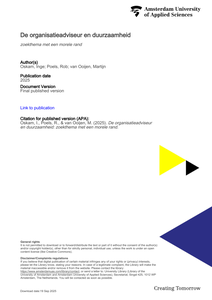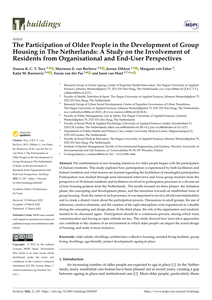In this paper, we explore the design of web-based advice robots to enhance users' confidence in acting upon the provided advice. Drawing from research on algorithm acceptance and explainable AI, we hypothesise four design principles that may encourage interactivity and exploration, thus fostering users' confidence to act. Through a value-oriented prototype experiment and valueoriented semi-structured interviews, we tested these principles, confirming three of them and identifying an additional principle. The four resulting principles: (1) put context questions and resulting advice on one page and allow live, iterative exploration, (2) use action or change oriented questions to adjust the input parameters, (3) actively offer alternative scenarios based on counterfactuals, and (4) show all options instead of only the recommended one(s), appear to contribute to the values of agency and trust. Our study integrates the Design Science Research approach with a Value Sensitive Design approach.
DOCUMENT

In this paper, we explore the design of web-based advice robots to enhance users' confidence in acting upon the provided advice. Drawing from research on algorithm acceptance and explainable AI, we hypothesise four design principles that may encourage interactivity and exploration, thus fostering users' confidence to act. Through a value-oriented prototype experiment and value-oriented semi-structured interviews, we tested these principles, confirming three of them and identifying an additional principle. The four resulting principles: (1) put context questions and resulting advice on one page and allow live, iterative exploration, (2) use action or change oriented questions to adjust the input parameters, (3) actively offer alternative scenarios based on counterfactuals, and (4) show all options instead of only the recommended one(s), appear to contribute to the values of agency and trust. Our study integrates the Design Science Research approach with a Value Sensitive Design approach.
MULTIFILE

This article investigates the aesthetic advice posted by temporary employment agencies on their websites. These agencies organise a substantial part of the Dutch labour market and they are known to apply exclusionary practices in their strategies of recruitment and selection in order to meet employers’ preferences. This article sheds light on (1) the content of the advice; (2) how it legitimises the importance of aesthetics for finding work; and (3) in what ways the advice serves the purposes of the agencies. An in-depth content analysis illustrates how the advice has the potential to reproduce exclusions, thus helping employment agencies adhere to employers’ exclusionary requests. Creating online content that generates traffic to the websites in this case causes a circular logic in which the importance of aesthetics is self-reinforcing. The study illustrates that the seemingly neutral and empty advice posted on websites may enforce exclusions in the temporary work labour market.
DOCUMENT

In this article, you will first read about our understanding of sustainability, about three different perceptions of urgency with regard to sustainability and the theoretical models that correspond to them. We will then explore how this topic is perceived in society and among the professional group of consultants. On the OOA's Impact Day in 2024, we discussed this with colleagues. Finally, we analyse our findings and invite you to join the conversation.
DOCUMENT

Current research on data in policy has primarily focused on street-level bureaucrats, neglecting the changes in the work of policy advisors. This research fills this gap by presenting an explorative theoretical understanding of the integration of data, local knowledge and professional expertise in the work of policy advisors. The theoretical perspective we develop builds upon Vickers’s (1995, The Art of Judgment: A Study of Policy Making, Centenary Edition, SAGE) judgments in policymaking. Empirically, we present a case study of a Dutch law enforcement network for preventing and reducing organized crime. Based on interviews, observations, and documents collected in a 13-month ethnographic fieldwork period, we study how policy advisors within this network make their judgments. In contrast with the idea of data as a rationalizing force, our study reveals that how data sources are selected and analyzed for judgments is very much shaped by the existing local and expert knowledge of policy advisors. The weight given to data is highly situational: we found that policy advisors welcome data in scoping the policy issue, but for judgments more closely connected to actual policy interventions, data are given limited value.
LINK
The establishment of new housing initiatives for older people begins with the participation of (future) residents. This study explored how participation is experienced by both facilitators and (future) residents and what lessons are learned regarding the facilitation of meaningful participation. Participation was studied through semi-structured interviews and focus group sessions from the perspective of 34 (future) residents and facilitators involved in participation processes in a diverse set of four housing projects from the Netherlands. The results focused on three phases: the initiation phase, the concepting and development phase, and the transition towards an established form of group housing. From the outset of such processes, it was important to involve all relevant stakeholders and to create a shared vision about the participation process. Discussions in small groups, the use of references, creative elements, and the creation of the right atmosphere were experienced as valuable during the concepting and design phase. In the third phase, the role of the organisation and residents needed to be discussed again. Participation should be a continuous process, during which trust, communication and having an open attitude are key. This study showed how innovative approaches can contribute to the creation of an environment in which older people can impact the actual design of housing, and make it more inclusive. Original article at: https://doi.org/10.3390/buildings12030367 © 2022 by the authors. Licensee MDPI.
MULTIFILE

In case of a major cyber incident, organizations usually rely on external providers of Cyber Incident Response (CIR) services. CIR consultants operate in a dynamic and constantly changing environment in which they must actively engage in information management and problem solving while adapting to complex circumstances. In this challenging environment CIR consultants need to make critical decisions about what to advise clients that are impacted by a major cyber incident. Despite its relevance, CIR decision making is an understudied topic. The objective of this preliminary investigation is therefore to understand what decision-making strategies experienced CIR consultants use during challenging incidents and to offer suggestions for training and decision-aiding. A general understanding of operational decision making under pressure, uncertainty, and high stakes was established by reviewing the body of knowledge known as Naturalistic Decision Making (NDM). The general conclusion of NDM research is that experts usually make adequate decisions based on (fast) recognition of the situation and applying the most obvious (default) response pattern that has worked in similar situations in the past. In exceptional situations, however, this way of recognition-primed decision-making results in suboptimal decisions as experts are likely to miss conflicting cues once the situation is quickly recognized under pressure. Understanding the default response pattern and the rare occasions in which this response pattern could be ineffective is therefore key for improving and aiding cyber incident response decision making. Therefore, we interviewed six experienced CIR consultants and used the critical decision method (CDM) to learn how they made decisions under challenging conditions. The main conclusion is that the default response pattern for CIR consultants during cyber breaches is to reduce uncertainty as much as possible by gathering and investigating data and thus delay decision making about eradication until the investigation is completed. According to the respondents, this strategy usually works well and provides the most assurance that the threat actor can be completely removed from the network. However, the majority of respondents could recall at least one case in which this strategy (in hindsight) resulted in unnecessary theft of data or damage. Interestingly, this finding is strikingly different from other operational decision-making domains such as the military, police and fire service in which there is a general tendency to act rapidly instead of searching for more information. The main advice is that training and decision aiding of (novice) cyber incident responders should be aimed at the following: (a) make cyber incident responders aware of how recognition-primed decision making works; (b) discuss the default response strategy that typically works well in several scenarios; (c) explain the exception and how the exception can be recognized; (d) provide alternative response strategies that work better in exceptional situations.
DOCUMENT

Dit bestand bevat het marketingcommunicatieplan, het verantwoordingsdocument en alle overige vereiste documenten.
MULTIFILE

In this paper, we test path models that study the interrelations between primary health careprovider attitudes towards working with drinkers, their screening and brief advice activity, and theirreceipt of training and support and financial reimbursement. Study participants were 756 primaryhealth care providers from 120 primary health care units (PHCUs) in different locations throughoutCatalonia, England, The Netherlands, Poland, and Sweden. Our interventions were training andsupport and financial reimbursement to providers. Our design was a randomized factorial trial withbaseline measurement period, 12-week implementation period, and 9-month follow-up measurementperiod. Our outcome measures were: attitudes of individual providers in working with drinkers asmeasured by the Short Alcohol and Alcohol Problems Perception Questionnaire; and the proportion ofconsulting adult patients (age 18+ years) who screened positive and were given advice to reduce their alcohol consumption (intervention activity). We found that more positive attitudes were associated with higher intervention activity, and higher intervention activity was then associated with more positive attitudes. Training and support was associated with both positive changes in attitudes and higher intervention activity. Financial reimbursement was associated with more positive attitudesthrough its impact on higher intervention activity. We conclude that improving primary health careproviders’ screening and brief advice activity for heavy drinking requires a combination of trainingand support and on-the-job experience of actually delivering screening and brief advice activity.
MULTIFILE

Een website waarop online tools op het gebied van psychosociale informatie en hulp aan jeugd/jongeren en gezinnen worden beschreven
LINK